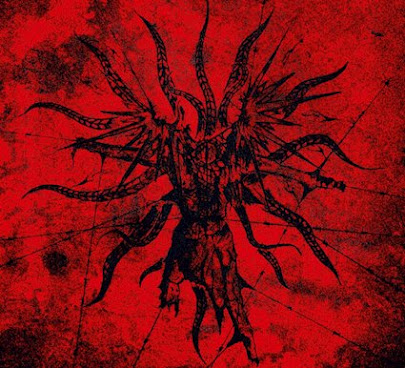I like the rules for Relations in the KULT Corebook. They're pretty awesome.
Relation moves are fun, and just varied enough to cover a few distinct situations that are likely to come up now and again... yet at the same time simple and unobtrusive enough to stay out of the way when not needed.
There are just a few things that irk me about these rules, as written.
For one, +0 Relations seem to be pretty useless.
I mean, the section about Relation moves in the Corebook even points out that those same moves only apply to Relations of +1 or better - so one could ask: Isn't it kinda pointless to even have the +0 ones in the first place?
So I mostly just ignore these. Any old NPC the characters meet could become a +0 Relation pretty much anytime they wanted them to. It just doesn't do anything, mechanically.
If they want to create truly meaningful Relations, they have to get them at a value of +1 (or better). To this end, I let players use the same rules that allow you to modify an existing Relation value by +/-1 at the end of each session - and just let them turn an established NPC (or a newly invented one, sometimes) into a new Relation at +1, if they want to.
However, I do like that the "intensity" of Relations comes in three tiers, going by RAW. So what I did after de-facto "losing" the +0 tier, was that I introduced a new third tier.
Yes, you guessed it, I have Relations range from +1 to +3 now.
This allows me to bring a little bit more granularity to the descriptions of how important someone (or something, someplace, etc.) is to any given PC. The new categories can look roughly something like this:
+0 someone you know, but don't really care too much about either way
+1 a friend, helpful colleague, sympathetic neighbor, former lover, or distant relative
+2 best friend, lover/spouse, close relative (e.g. parent, child, sibling)
+3 soulmate, sole surviving relative, oldest & truest friend since childhood...
The Relation moves stay unaffected by these changes, as I find that they work just fine with this new scale.
Yes, that means that you'll have to Keep it Together at -3 in order to bring yourself to actively harm a Soulmate-tier Relation of yours... and that you'll lose 3 Stability if they're hurt or harmed (and 6 Stability if they die)... But that seems fair enough, in fact.
In return, you are also able to regain up to +3 Stability when having scenes of closeness and affirmation with them.
As for Start-of-the-Game considerations, I let players choose either one +2 and two +1 Relations at the start of the game, or one +3 and one +1 Relation.
The idea behind the latter being that, if there is someone that important to you in your life, you'll have little time, energy, and emotions to spare for other people of minor importance besides this one predominant affection.
Negative Relations
Sometimes people have asked me about these. Can you have Relations going below zero? And if so, what would that mean?
Here's how I have handled that in the past.
Note: I don't always use the below mechanics as a general rule in every game, mind you.
But if a player specifically asks for it, and it makes sense in the fiction (and let's face it, The Avenger is the prime suspect here, tbh. It has also sometimes crept up with The Doll or The Broken... and it could theoretically come from anyone...), then I may draw on these ideas.
It's mostly just about doing two things:
Expand the Scale Downwards
This one is easy. Decide whether you want to go all the way down to -3, or to cap it at -2, and inform your players of the new range of values y'all can now play with.
PCs with Disadvantages such as Oath of Vengeance, Nemesis, Rival, Wanted and the like, may express a desire to choose one negative Relation right out the gate, at the very start of the game. If they ask for that, let them.
For anyone else, just introduce NPCs during the course of the game as normal, and watch your players' reactions to these various people. Later, for example when asking the players at the end of every (or some) session(s) whether they'd like to modify any of their existing Relation values, you can also ask (or suggest to) them if they want to gain a newly introduced NPC as a negative Relation.
Perhaps ideally start most of them off as just a -1 Relation, unless that NPC has already ruined the players' plans especially disastrously, committed unspeakable atrocities against their loved ones, or similar horrors.
Normally, however, you can still let them drift their favorite antagonists gradually to the very bottom of the sympathy scale, all in good time.

Inverted Relation Moves
This one is hardly any more complex - it just requires an inverted reading of the existing Relation Moves.
So, for example, Wish no Harm becomes Wish Them Harm, where you have to Keep it Together in order to hold back from hurting your Relation (or sabotaging their plans etc - the move explicitly points out "indirect harm" as part of its trigger) when you have an opportunity to do it but it would be impolitic to seize it right now.
On a success with complications (10-14), you may hold back from harming your enemy, but in addition to the normal outcome of the KiT move, you also take a +Relation penalty to any other moves you make during the same scene.
On a failure (-9), in addition to the normal outcome, you cannot control your hostile impulses and must harm your Relation, going about it as viciously as possible.
Regain Stability turns into something perhaps better named Insufferable Presence.
In a scene where you must endure your Relation's proximity and are subjected to their gloating, mockery, spite, or other form of mental and emotional torment, your Stability is decreased by a number of steps equal to the strength of the Relation value.
Lose Stability, on the other hand, becomes more like Schadenfreude or Vengeful Glee.
If a negative Relation of yours is seriously injured, your Stability is improved a number of steps equal to the strength of the Relation value. Double that number if the Relation dies.
(In the above, note that "seriously injured" can, especially depending on the context of your particular campaign or scenario, be fulfilled by things other than purely physical harm. A business rival's ability to antagonize you could be "seriously injured" by you burning down one of their factories... or setting the IRS on their trail under forged pretenses of tax fraud. Your former abuser who wants you back in their filthy clutches could be "seriously injured" by getting the court to finally have that restraining order issued. That lictor which has foolishly kept making enemies of your PCs could be "seriously injured" by the PCs ripping open a sizeable portal to Inferno right there in the city / district / building it was supposed to be guarding against just such intrusions...)
As I said in the beginning, I really like the rules for Relations in K:DL - and I like even more to expand, modify, and twist them around! I hope I have shown you some ways in which this can be done, and given you ideas to use in your own games.

















